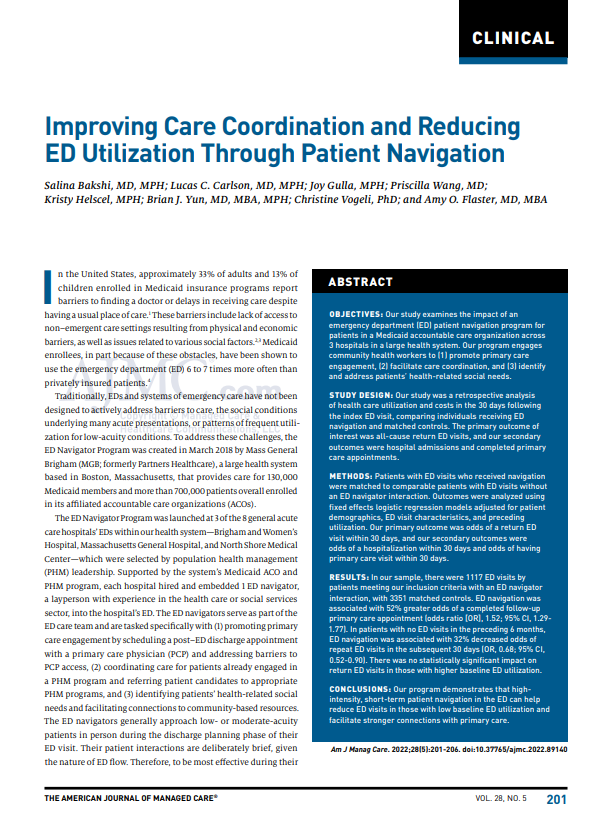Headline
A short-term emergency department (ED) navigator program helped address acute care utilization for individuals with low baseline utilization through primary care follow up appointments and assistance with social needs.
Context
For many Medicaid enrollees, physical, social, and economic barriers can limit access to non-emergent care settings. A large Massachusetts health system with patients enrolled in affiliated accountable care organizations developed a short-term ED navigator program with community health workers to address these barriers to care and encourage primary care engagement and care coordination by scheduling a follow up appointment with a primary care physician. This study evaluated how this program impacted all-cause ED visits and primary care appointments, compared to matched controls.
Findings
The ED navigator program led to a 52 percent increase in completion of follow-up primary care appointment. The most substantial impacts of the program took place for those who were not frequent utilizers of the ED, as compared to those who had multiple recent visits over the year. Patients with no ED visits in the preceding six months had 32 percent decreased odds of repeat ED visits within 30 days if they saw the ED navigator. However, individuals with higher baseline ED utilization did not experience any change in return ED visits after working with the ED navigator.
Takeaways
Health systems and plans may prioritize implementation of short-term ED navigation programs for patients with low baseline health care utilization, as individuals with more utilization may not benefit from this type of approach to promoting primary care engagement and addressing health-related social needs.


